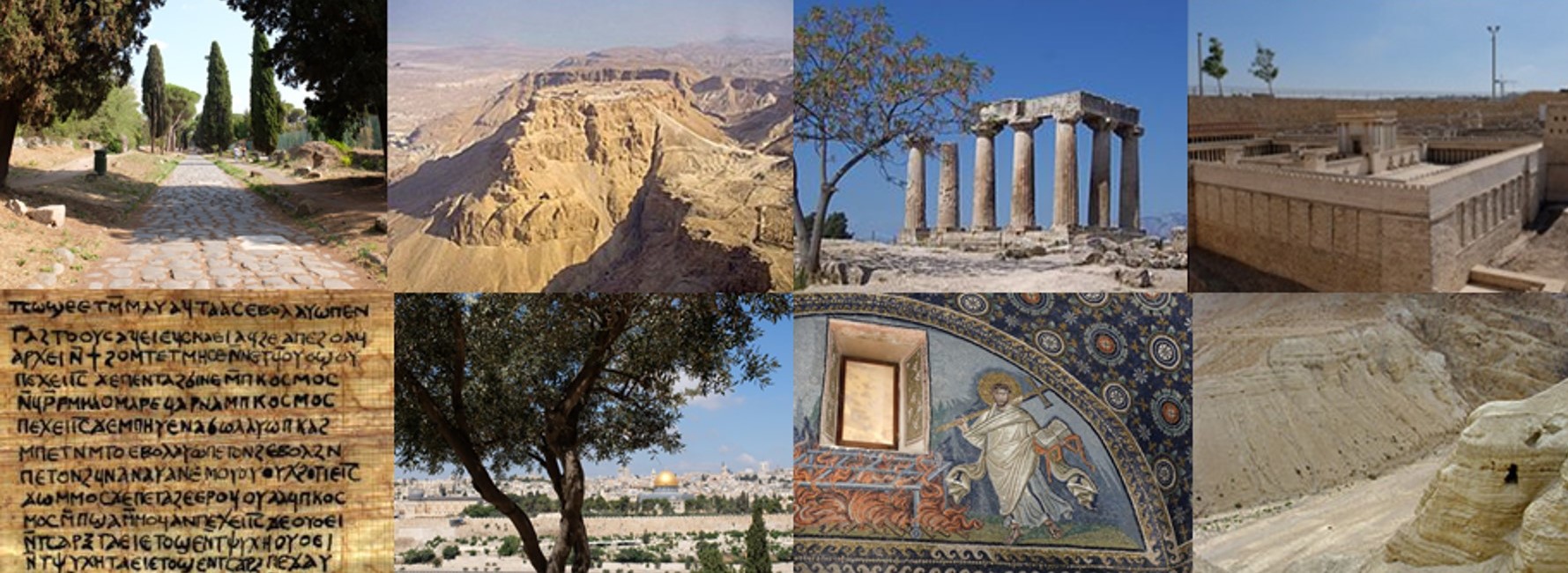Chairs: Tim Carter and Kent Brower
Session 1
Andy Angel, St Andrew’s, Burgess Hill, ‘Divine Warrior Christology in Matthew and Mark, the earliest Palestinian Community, and possibly Jesus‘
This paper explores a neglected thread in the quest for early high Christology. Since Martin Hengel’s Son of God, much attention has been focused on exalted humans, principal angels and the figure of Wisdom as possible models for or parallels to Jesus’ heavenly enthronement and identification with or as God. Despite Alan Segal’s suggestion, little attention has been focused on the figure of the Divine Warrior. This paper seeks to illustrate how Matthew and Mark both draw on a living tradition of Divine Warrior mythology in Second Temple Judaism to identify Jesus with the Divine Warrior of Israel, and how this identification probably lies behind the maranatha prayer of the primitive Christian community in Jerusalem.
Tim Carter, London School of Theology, ‘Why did Joseph of Arimathea give Jesus a Decent Burial?’
How did the body of a man crucified by the Roman authorities on the treasonous charge of being the ‘king of the Jews’ end up being buried in the kind of tomb normally reserved for the elite? This scenario is deemed to be so implausible by Crossan, Ehrman and others that it casts doubt on the claim that Jesus was buried at all.
My paper will review the evidence that it was standard Roman practice to leave the bodies of those who had been crucified unburied, and assess the extent to which Jewish sensibilities over leaving the bodies of the dead unburied might have overridden this, given Pilate’s apparent lack of sensitivity to the nation over which he was governor. It will be argued that Pilate was open to bribery, and that as a member of the Jewish ruling aristocracy, Joseph would have been a wealthy man (Mt. 27:57), and therefore had the requisite resources to persuade Pilate to release the body.
It is also likely that it was the Jewish ruling class who were engaged in the process of building tombs for ancient prophets (Mt. 23:29//Lk. 11:47), partly as a way of seeking to make atonement for the historic sin of killing prophets. If Joseph, as a prominent member of the council, supported this project, then he may have felt that history was repeating itself when the council condemned to death a man widely regarded as prophet. Given this scenario, there is good reason to suppose that he would have intervened and used his resources to ensure that the body of Jesus received a proper burial. The interment of Jesus’ body in a rock-hewn tomb can thus be shown to have a plausible historical basis.
Session 2
Kyongmo Kim, University of Aberdeen, ‘Why did not Matthew explain the delay of parousia? Comparison of the eschatological delay in Matthew and 2 Baruch’
Many scholars have argued that Early Christianity and first-century Judaism confronted a similar problem of the eschatological delay. However, Matthew’s approach to the eschatological delay is different from the Jewish apocalypse and even the other books of the New Testament (e.g. 2 Pet 3:8-9): he does not explain the delay. Comparing Matthew with 2 Baruch—both books known as written in a similar period, right after the destruction of the temple—this paper will argue that Matthew’s imminent expectation of the end of the age made this difference in coping with the eschatological delay. Despite his implications of the delay of the parousia, Matthew maintained Jesus’ sayings about imminent expectations of the End in his gospel, which even sound like false prophecies to our contemporary readers. This paper will also suggest that Matthew understood the destruction of the temple in A.D. 70 as the beginning sign ushering into the end of the age, which was regarded as only one of the events that would occur at the End in 2 Baruch.
Edmund Y. M. Leung, University of Edinburgh, ‘A Spatial Examination of the Disciples Being with Jesus in Mark’s Narrative by Soja’s Thirdspace Theory’
Mark’s narrative contains more vivid descriptive details than the other gospels. One of the striking features of Mark’s storytelling is the literary creation of a private space for Jesus and his disciples. This sphere enables the disciples to experience their presence with Jesus, echoing Jesus’ commission of his disciples exclusively in Mark (ὦσιν μετ᾽ αὐτοῦ in 3:14). While previous scholarship affirms the positive function of the disciples’ presence with Jesus in terms of the ancient master-pupil relationship, Mark uses the private space to accentuate that the disciples are no different from those outsiders in their inability to understand Jesus and his ministry (4:12). However, a close examination of this space within the narrative context remains elusive. As a provocative approach with combing the historical and social understanding of space, Soja’s thirdspace theory arguably illuminates the significance of the disciples’ presence with Jesus in the private space, manifesting a theological transformation beyond the unidirectional movement from being an outsider to an eligible insider in terms of Mark’s discipleship.
Session 3
Panel review of Professor Helen Bond’s book, The First Biography of Jesus: Genre and Meaning in Mark’s Gospel (Grand Rapids: Eerdmans, 2020).
Helen Bond is Professor of Christian Origins and Head of the School of Divinity at the University of Edinburgh. She is also President of the British New Testament Society. The reviewers on the panel will be Dr. Kent Brower, Nazarene Theological College, Manchester, and Professor Richard Burridge.

